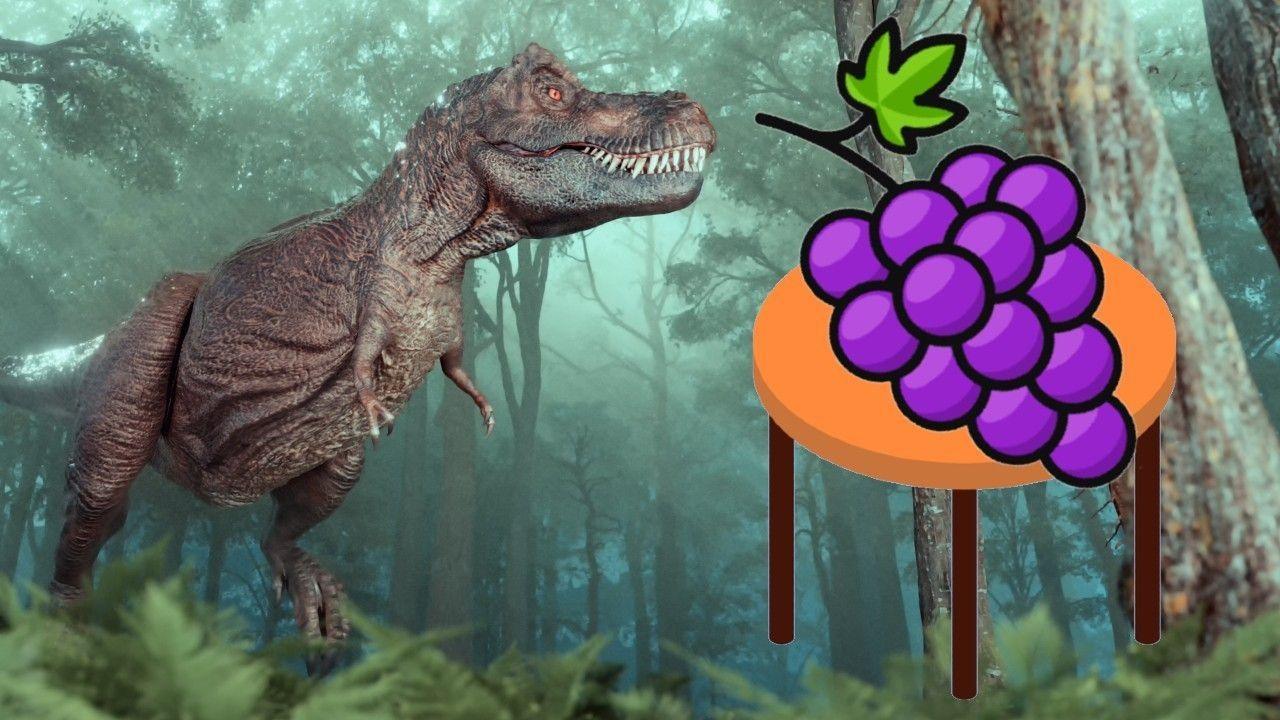How the extinction of dinosaurs spread grapes around the world

- Published
Lots of people are fans of grapes, which are a type of fruit.
They're small, sweet and healthy, making them the perfect bite-sized snack for many and they can be enjoyed fresh, or in their dried form as raisins.
Now, new research suggests we may have the dinosaurs to thank for the spread of grapes around the world.
Researchers have found fossil grape seeds which they believe date back to between 60 and 19 million years old in Colombia, Panama, and Peru.
More like this
- Published23 June
- Published14 February
- Published18 April
The fossilised grape seeds are thought to be between 60 and 19 million years old
One of the species of grapes found represents the earliest known example discovered in the Western Hemisphere, which is the side of the world which includes North and South America.
The discovery of the seeds is a big deal as it helps provide more information on how the grape family may have spread after the death of the dinosaurs.
"These are the oldest grapes ever found in this part of the world, and they're a few million years younger than the oldest ones ever found on the other side of the planet," says Fabiany Herrera, who is a plant fossil expert at Chicago's Field Museum and the lead author of the new study.
"This discovery is important because it shows that after the extinction of the dinosaurs, grapes really started to spread across the world."
What do dinosaurs have to do with the spread of grapes?
Dinosaurs roamed the Earth millions of years ago
It's not often that fruits are preserved as fossils, as their soft fleshy form means they break down very quickly.
This means scientists tend to rely on the seeds of fruits to learn more about them and their origins, as seeds are stronger and more likely to fossilise.
The oldest known fossils from grape seeds span all the way back to 66 million years ago, and were found in India. This is also around the time when an asteroid hit the Earth, wiping out the dinosaurs.
The researchers who carried out the study believe the event also had a knock on effect on the environment the dinosaurs once roamed around in.
“We always think about the animals, the dinosaurs, because they were the biggest things to be affected, but the extinction event had a huge impact on plants too,” says Herrera.
“The forest reset itself, in a way that changed the composition of the plants.”
Herrera and his fellow researchers say the disappearance of the dinosaurs might have helped alter the forests.
Grapevines are known to spread and climb quickly
"Large animals, such as dinosaurs, are known to alter their surrounding ecosystems. We think that if there were large dinosaurs roaming through the forest, they were likely knocking down trees," says Mónica Carvalho, who is a co-author of the study from the University of Michigan’s Museum of Palaeontology.
However, following the extinction of large dinosaurs, some tropical forests including those found in South America became more crowded, providing an opportunity for various types of plants to spread.
“In the fossil record, we start to see more plants that use vines to climb up trees, like grapes, around this time,” added Herrera.
The extinction of the dinosaurs led to the eventual increase of other species, such as small birds and mammals that would eat grapes and poo out their seeds
The increase in the diversity of birds and mammals in the years following the mass extinction, may have also helped with the spread of grapes, with these creatures eating them and pooing out their seeds.
In learning about ancient fruits like this, scientists also believe we can discover more about the history of the world's ecosystems.
“...these little tiny, humble seeds can tell us so much about the evolution of the forest,” says Herrera.
More of the latest stories
- Published2 July
